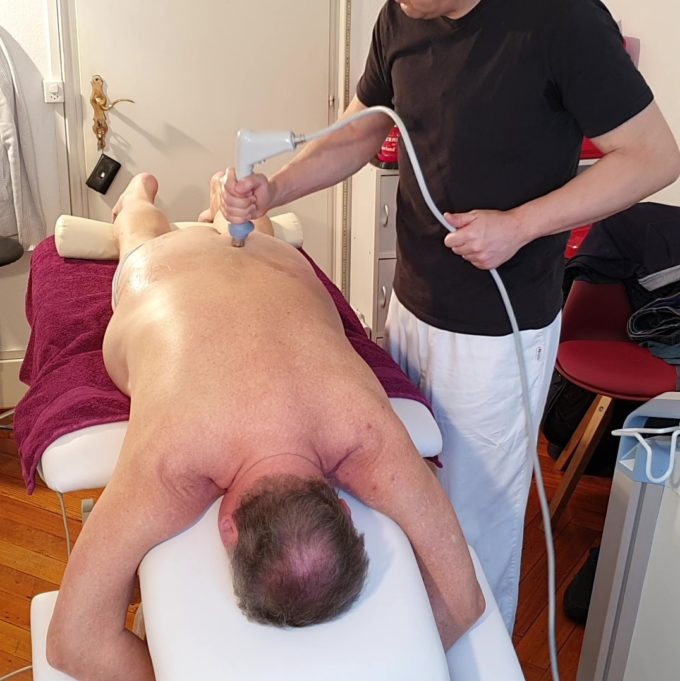This clinical case is exceptionally thought through with beautifully orchestrated treatment. Gerry Ivanov, LMT from Switzerland, was able to solve an extremely difficult and seemingly unsolved clinical case by integrating various techniques and modalities of somatic rehabilitation and attacking the patient’s difficult situation from several directions. Also notice how cleverly and patiently he increased pressure on the patient’s body slowly building up clinical response.
Despite that Medical Massage was the cornerstone of an entire treatment process we decided to name this clinical case as ‘Integrative Therapy’ rather than ‘Medical Massage’.
Gerry greatly illustrated for us how important is correct integration of techniques and modalities if therapists would like to reach stable clinical results in a relatively short time.
Dr. Ross Turchaninov, Editor in Chief
INTEGRATIVE THERAPY VS SEVERE SPONDYLOSIS AND FUNCTION LOST
Gerry Ivanov, LMT
Geneva, Switzerland
The patient is a 61-year old male who owns a home-based business. For almost three years now he has had acute pain in the lower back which greatly affects his range of motions and everyday activities. During these years the patient was unsuccessfully treated with medications and physical therapy and in several hospitals and clinics in Moscow and Switzerland.
EVALUATION
Complaints During First Visit:
Intense bi-lateral pain in the lower back, general weakness in both legs especially the right, numbness in the left hip and anterior-lateral thigh. Sleep pattern is greatly affected, and the patient is physically and emotionally exhausted from pain and lack of night sleep.
Clinical Evaluation:
The patient exhibited a complex clinical picture which indicated severe irritation of the L1-L5 lumbar spinal nerves and lumbar plexus. Measurement of his legs indicated that right lower extremity 1.6 (half of inch) is shorter due to the pelvis tilt.
Examination of the cutaneous (i.e., skin) reflex zones indicated the presence of sensory deficit (paresthesia or ‘pins and needles’) along the left iliotibial band, leg and all way down to the top of the foot. It indicated irritation of the sciatic and common peroneal nerves on the left side. Dr. Solomon’s compression points to test for possible sciatic nerve irritation were positive on both lower extremities.
Examination of the reflex zones in the skeletal muscles indicated the presence of the active trigger points in quadratus lumborum muscle on the both sides, gluteus maximus and piriformis muscles.
Further testing indicated the presence of significant muscle weakness in: iliopsoas, gastrocnemius, extensor hallucis longus and tibialis anterior muscles.
The patient’s biceps femoris was so hypercontracted that it was simply impossible to perform Lasegue’s Test to examine the degree of sciatic nerve inflammation. Tension is biceps femoris greatly contributed to inflammation and adhesions formed along the sciatic nerve.
Thus, the patient exhibited motor deficit within sciatic (common peroneal and tibial nerve distribution) as well as the femoral nerve.
In the MRI report the radiologist described advanced spondylosis with disc herniation on the levels L3-L4; disc protrusions L2-L3, L4-L5 and L5-S1; a synovial cyst of the left transverse joint on the level L3-L4 and multiple Schmorl’s hernias at levels T12-L2. Degeneration of itervertabral disks caused deformation of the dural sac and compression of the cauda equina (or bundle of L1-L5 spinal nerves).
Considering the complexity of the clinical picture and lack of positive dynamic with conservative therapy the only solution offered to the patient was spinal surgery.
TREATMENT
A radiologist’s report as well as our evaluation confirmed a very difficult and complex clinical case. The patient was unsuccessfully treated in various clinics and hospitals, but his treatment history indicated that all therapies were done with very limited sets of clinical tools. Thus, it was obvious that the integration of methods and modalities of somatic rehabilitation was missing.
I decided to give the patient a last chance with conservative therapy and to customize an integrative treatment protocol. My idea was to carefully combine clinical modalities and slowly increase the complexity of the therapy, in the affected area, while the patient was going through the treatment process.
Here is the treatment protocol I designed for the patient:
1. Medical Massage in an inhibitory regime starting from lower extremities. The goal is to release the tension and rebalancing actions of large muscle groups. Strokes were directed laterally and proximally.
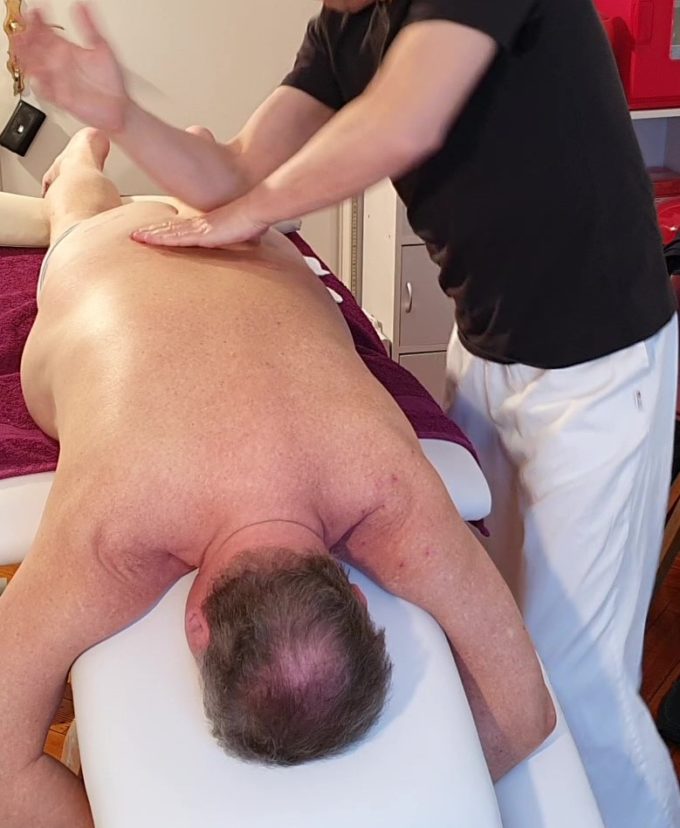
Fig. 1. Work with gluteal muscles
2. Acupuncture – S5-CS2 on periost depth, bi-lateral, and also in Vastus Latetralis, Iliotibial Tract, Gluteus Maximus, Gluteus Medius, Piriformis, Quadratus Lumborum.
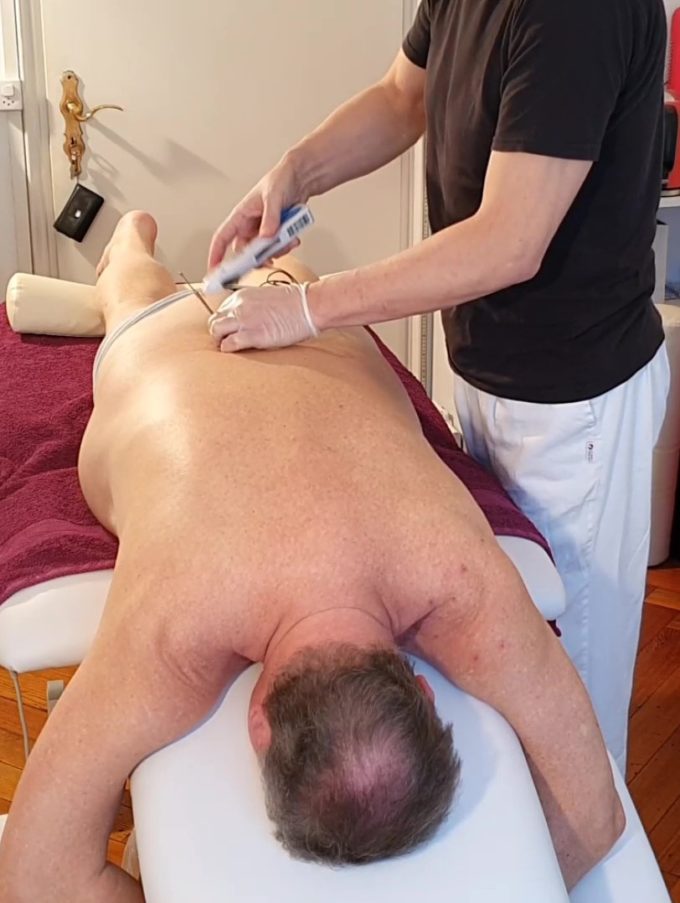
Fig. 2. Acupuncture in the lower back
3. Trigger Point Therapy massage in Quadratus Lumborum, Piriformis, Gluteus Maximus, Gluteus Medius, Biceps Femoris, Semitendinosus and Adductor muscles.
4. Myofascial Release in the thoracic and lumbar areas.
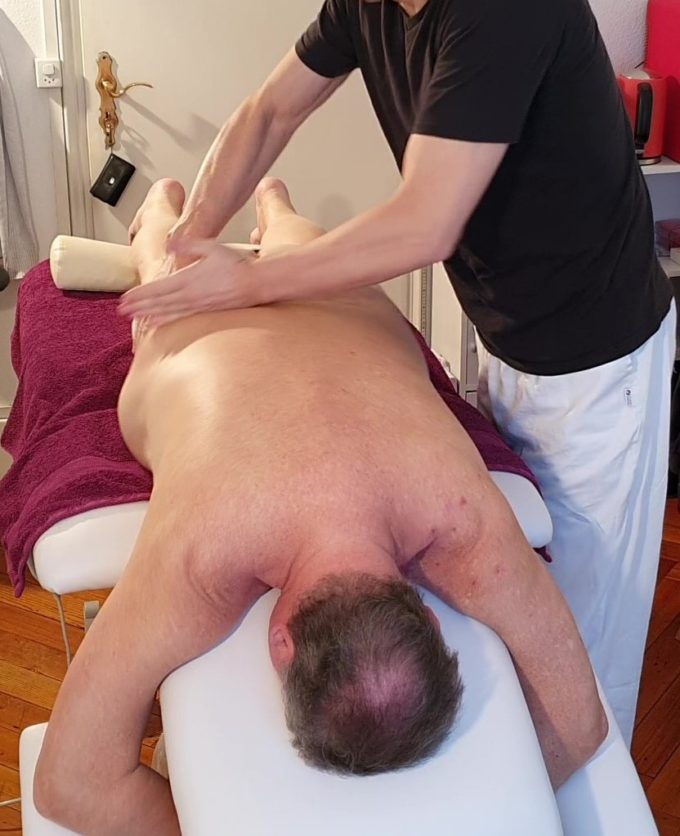
Fig. 3. Myofascial work on the level L4-S1
5. Radial Shockwave 10 and 15 Hz, 2.5 – 4 bar administered on Biceps Femoris, Semitendinosus, Adductors group, Gluteal group, and Sacrospinalis.
6. Sacroiliac and Hip joints stretching.
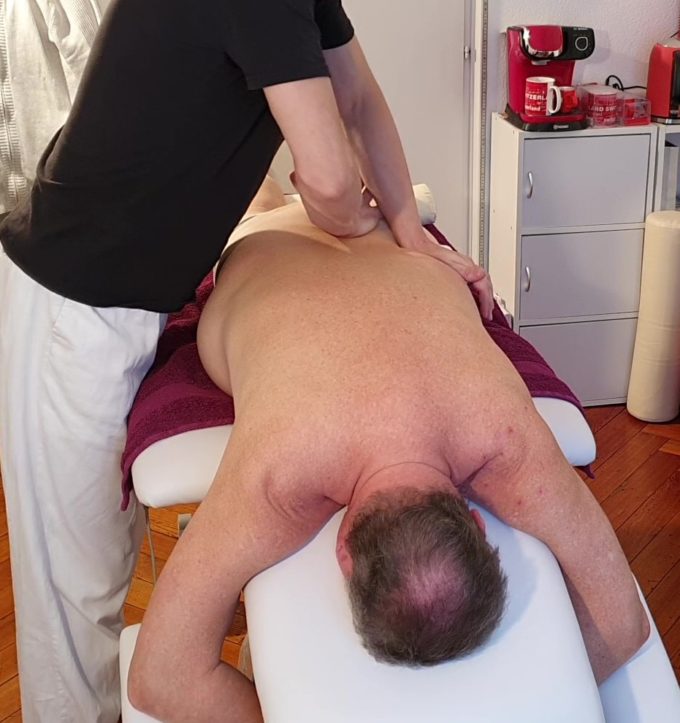
Fig. 5. Stretching of Sacroiliac Joint
7. Stationary and Mobile Cupping paravertebrally along the lumbar and thoracic spine and both legs.
8. Electric Vibration along thoracic and lumbar spine to additionally control the pain-analyzing system.
9. Low level Laser Therapy administered on all branches of L3 – S1 spinal nerves.
10. Pressure release in the lower back using PIR (Postisometric Muscular Relaxation) and tractions in the lower back and lower extremities.

12. At the end I applied Bee venom cream in all areas of pain.
I also suggested taking immunotherapy support formulas: INFLAM, ARTH and OSTEO-N.
Even after the first session, the patient reported short period (7-8 hours) of being pain free! Very carefully, from session to session I increased the intensity of the Medical Massage protocols, the power levels of the Radial Shockwave, and the degree of laser energy. I also started gentle massage along Valleix points associated with sciatic nerve from ischial tuberosity all the way to the popliteal fossa.
These first 7 sessions were spent to prepare the patient for full application of the full power of Medical Massage in the form of Segment-Reflex Massage protocol for Thoracic and Lumbosacral Spondylosis. Techniques and their sequence I used:
Pulling and rolling fold of a skin in the lower back in directions of Connective Tissue Massage to eliminate adhesions below the skin and decompress the superficial fascia. Sawing friction in the cranial direction.
Kneading, stretching and relaxing the paravertebral muscles. Electric vibration. Friction between spinous and transverse processes of the lumbar vertebrae.
Spiral frictions along the sacrum, insertion of gluteal muscles into the sacral edge and SI joint, into greater trochanter and along the muscle fibers. Kneading of gluteal muscles, vibration and shaking of the pelvis.
Electric vibration with medium intensity, kneading in the inhibitory regime, and stretching along the sciatic nerve. Weakened muscles in the thigh being and leg were stimulated with various friction, compressions and percussion techniques.
One of the major problems for this patient was very weak iliopsoas and anterior thigh muscles. Thus, according to Sherrington’s law of reciprocal inhibition I concentrated on the hamstring muscles first to inhibit their tone and as a result to stimulate activity of iliopsoas and quadriceps muscles.
After the 9th session (with two consequent sessions of SRM), the numbness along the left tight completely disappeared, the numbness and weakness in the right leg became very mild. The patient regained muscle power and his gait normalized. For the first time he was able to easily go upstairs. He stopped having pain at night and his sleep pattern completely normalized.
Currently I continue to work on the patient to eliminate residuals of spinal nerves’ compression but having spinal surgery is not even an option anymore.
ABOUT THE AUTHOR
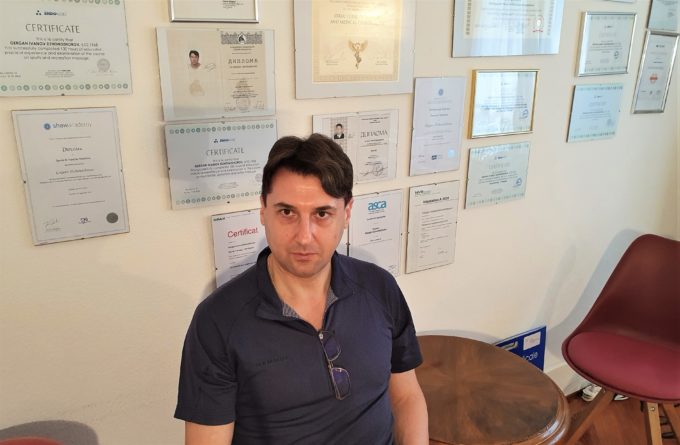
Gergan (Gerry) Ivanov, LMT
Gergan (Gerry) Ivanov graduated National Sports Academy in Sofia Bulgaria and in 20007 he obtained Master of Science Degree from University Paisii Hilendarski Plovdiv, Bulgaria. Presently he studies at The French Institute of Micro-immunotherapy.
Gerry certified in application of a great number of therapeutic modalities from basic massage therapy and Sports Massage to Medical Massage methods and techniques as well as laser therapy, shock wave therapy, acupuncture, reflexology, nutrition, phototherapy etc.
Gerry worked in clinics and hospitals in Bulgaria, France, Netherlands. He is currently living and works in Geneva in Switzerland. He is member of The International Society of Physical Medicine and Rehabilitation.
Category: Case Studies
Tags: 2020 Issue #2

